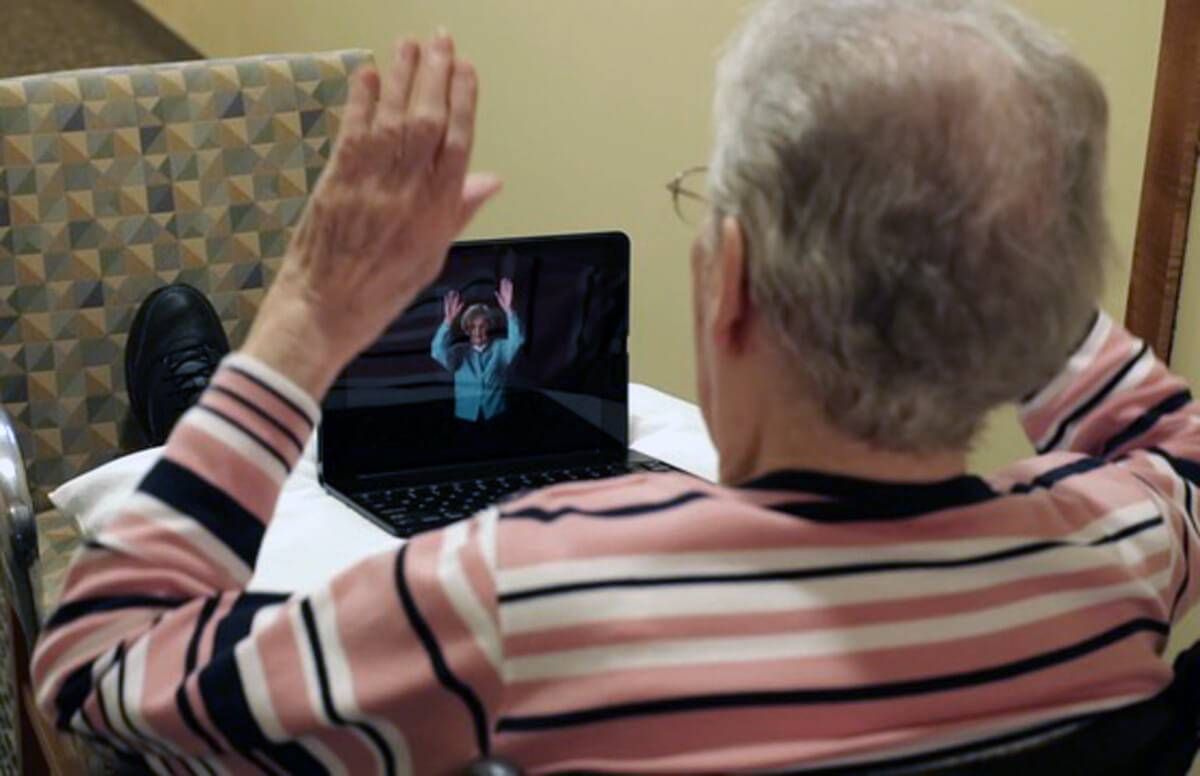Using Simple Movements to Calm the Nervous System
A new multimedia program uses body movement, music and video
A multimedia program first developed to help calm children with autism is now proving to be of great help to older adults with anxiety or dementia.

Called “LifeMoves,” the sensorimotor program incorporates simple, gentle arm movements with soothing music. Participants watch a video of a person doing the movements and can follow along or simply watch and listen to the music.
It all helps to calm the nervous system, allowing people who are experiencing anxiety, confusion or both to feel safe and do whatever they need to do, says the program’s creator, Roberta Scherf.
Scherf founded PrioHealth in Hudson, Wisc., about 12 years ago. The company now offers two programs: “MeMoves” for children, which the company released in 2010, and LifeMoves for older adults, which came out earlier this year.
Years of Research to Help Her Daughter
The programs are the result of research Scherf began 20 years ago to find an effective way to calm and help her daughter, Rowan, who has autism and is now 26.
When Rowan was young, she couldn’t interact with people and had trouble learning. Scherf was searching for a way to calm Rowan during the times she was experiencing severe anxiety. After research on the nervous system and trying out different movements with Rowan, Scherf found life-changing success for her daughter.
She later developed the routine into MeMoves, which is used in thousands of school districts and therapy centers in the U.S., Canada and around the world.
A Simpler Movement Program
When Scherf first started the research to help her daughter, she considered disciplines like Tai Chi and Yoga. They are known to not only improve physical and cognitive abilities, but to bring about a feeling of calm. Scherf soon realized she needed something much simpler.
“If you look at all sorts of these movement practices, like Yoga, Tai Chi and Brain Gem, they all share at least two things: They are specific movements that must be learned by someone, and that person needs to teach them to someone else,” Scherf says. She needed a simple set of movements anyone could do right away.
MeMoves and LifeMoves consist of fluid arm movements that follow simple geometric patterns. The videos include several different sequences of about three to four minutes each. The individuals demonstrating the movements are a diverse group including a wide variety of ages — from 18 months to 99 years — all smiling and looking into the camera.
Seeing the friendly people in the video works with the music and movements to help participants feel calm and safe, Scherf says.
“We do that because it connects people,” she says. “We find that all of the eye contact and expressive features of emotion that these people bring, it’s safe and it’s not a threat because they’re on the screen … every one of those different people looks at you without making any kind of demand, non-judgmentally, kindly, with love.”
Testing Shows Promising Results
LifeMoves is being tested in a few senior living communities, including at the Veterans Affairs Health Care System in Minneapolis and Tucson and Presbyterian Homes of Bloomington in Minnesota.
Scherf is awaiting hard data from the testing, but is hearing positive feedback, much like she has with the MeMoves program.
Lauren Johnson, a physical therapist at Presbyterian Homes, says she began using LifeMoves in October with residents who have severe anxiety, dementia or both. “A lot of times the residents get so anxious just knowing what they’re going to have to do that it prevents them from being able to complete a task,” she says.
Johnson has seen some positive results with the program, including for one woman who was extremely anxious about walking due to recent falls. Recently, Johnson had the woman watch the program, and it helped. "She took three steps, and then I just played a little clip of LifeMoves for her, like a minute or two, and after she watched that, she actually walked like twenty feet. That was just amazing, just how that little one- to two-minute clip of it just calmed her and created a much calmer environment for her," Johnson says.
Some residents respond very well to LifeMoves, while for others, it doesn’t seem to make much of a difference, she says.
“It’s just kind of trying to find those patients who it does work for, and in those cases, they can show amazing progress after watching it for just a short period of time,” she says.


